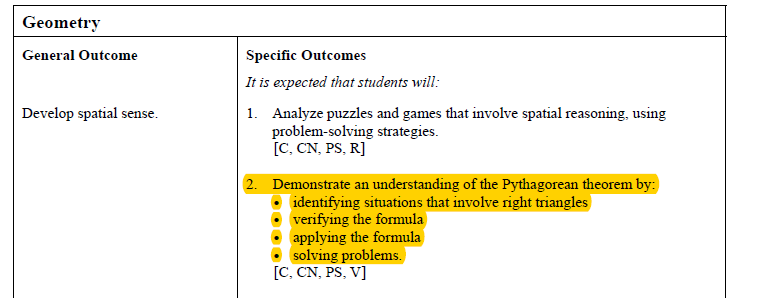Proof of Pythagorean Theorem
Move the blue points around to enlarge/shrink the dynamic image. What inferences can you make about the relationship between the area of the squares and the side lengths of the triangle?
Proof of Pythagorean Theorem
The sum of the area of the two squares on the side lengths adjacent to the 90 angle (blue and red square) equals the area of the square on the hypotenuse (green square). This is known as the Pythagorean Theorem and can be written as an equation: , where "c" is the hypotenuse and "a" and "b" are the length of the other remaining sides.
UPDATE! I realized my first example had two equal side lengths. As such, I wanted to provide a more dynamic example so I tried again using a differnt method :).
Construction Protocol Video
Curruclar Links: 10-3 Specific Outcomes
